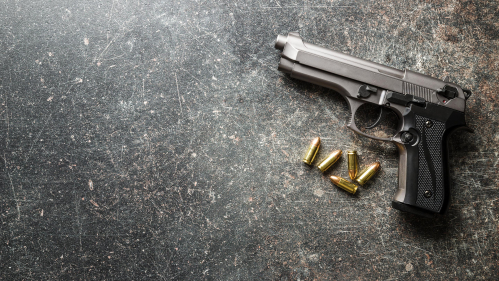Handgun Ownership Associated With Firearm Suicide

Handgun ownership, not shotgun ownership, is associated with greater odds of a person having died from self-inflicted gunshot wound rather than another suicide method, according to Rutgers researcher
Among firearm-owning individuals who died by suicide, handgun ownership was associated with greater odds of having died by self-inflicted gunshot wound rather than by another method, according to a Rutgers researcher.
The study, published in the Archives of Suicide Research, surveyed surviving loved ones of 121 handgun and shotgun owners who died by suicide — 93 of whom died with a firearm and 28 who died through other means — and asked about the numbers and types of firearms the individuals had and the circumstances of their deaths.
The researchers found that 77 percent of those who died using a firearm, as well as 61 percent of those who died using another method, owned a handgun. They also found that 88.8 percent of individuals who only owned handguns used a firearm in their suicide death as compared to 81.8 percent of those who only owned shotguns. Researchers also found that the more firearms a person owned, the less likely they were to use one in their death.
“This finding was surprising,” said author Michael Anestis, executive director of the New Jersey Gun Violence Research Center and associate professor of urban-global public health at Rutgers School of Public Health. “Although such stockpiling may increase the odds of other problematic outcomes, it appears from our results that the risk for firearm suicide may actually be highest among those who own only one or a small number of firearms.”
According to the Centers for Disease Control and Prevention, the United States has seen a 33 percent increase in suicide deaths over the last 18 years. In an attempt to prevent suicide, researchers are trying to understand what variables affect the choice between using a firearm versus another method, Anestis said. “It is clear that firearm access increases risk of suicide death overall, but little is known about what differentiates firearm owners who die by suicide using a firearm from those who choose another method despite having firearm access,” he said.
It appears, Anestis said, that shotguns – which are often owned primarily for recreational purposes like hunting – are stored in hunting lodges or with locking devices and not as easily accessed as handguns, which are often primarily owned for protection and may be stored loaded and easily accessible.
“It also may simply be that any firearm in the home bestows risk of use as a suicide method, but that when multiple types of firearms are owned, an individual is likely to default to handguns due to logistical issues or ease of access,” he said.
The findings can help researchers better understand who among those at elevated risk — such as those with firearm access — are most likely to use their firearms in a suicide attempt and can better inform interventions for specific groups of firearm owners.
Allison E. Bond, at the Suicide and Emotion Dysregulation Laboratory at the University of Southern Mississippi, was lead author.


